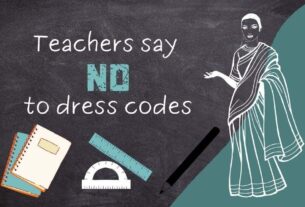As ADHD is becoming more prevalent among children, schools are trying to help students cope with it.
If your child has excessive screen time, cannot concentrate on one thing at a time or tends to have excessive physical movement, then he or she might be at the risk of having Attention Deficit Hyperactivity Disorder (ADHD), but now your child’s school may come to the rescue.
Psychology department of SJR School Kengeri, said they have psychology teachers who takes note of students who show symptoms of ADHD. When they notice any cases of ADHD, they start working with them. “Our school has been very focused towards attention span of students. We watch out for low concentration in activities or studies or excessive physical movements, fidgeting among students. After identifying them we talk to their parents about the situation and suggest them to take more professional help,” said a teacher in the department.
Naveen, teacher at BKS School Kengeri, said, “Our school had a workshop on ADHD for the teachers where we were thoroughly educated on the topic to later help students with it.” He also added, “We try to indulge them in activities to increase their concentration like focus games, listening activities and many more and if the student still struggles, we refer them to a psychologist.”
American Psychiatric Association defines ADHD as attention deficiency disorder known to impact a person’s academics, profession, relationships and daily functioning. Indian Academy of Pediatrics published a survey in 2022 that shows prevalence of ADHD in school children was around 11 percent. Another study shows that prevalence of ADHD in Indian school children is higher than the global estimate of 11.32 percent.
Rajshri Anand, teacher at YMCA school said, “I have been teaching for more than 20 years now and I have seen lack of attention in students over the years. Earlier, it was not difficult to engage students in studies for longer hours. But now children find it difficult to pay attention to one thing particular and tend to continuously shift their attention from one thing to another.”
Vani Prabha, psychiatrist at Victoria Hospital, Bengaluru said ADHD has been prominent since last seven or eight years. “I encounter five to six cases per week as compared to one or two cases in a year earlier and most of them are children starting from two years to their adolescent years. Social media and technology are one of the major reasons why attention span of children is depleting day by day,” she said.
Rekha Khare mother of a 12-year-old girl said, “I did not know until recently that attention deficiency is a disorder. I have been noticing that my daughter is struggling to focus on her studies, as she keeps getting distracted by her phone or otherwise. After it was made known in her school I got to know that it could be a possible disorder she could be affected with.” She also said, “If she continues to show more symptoms, I will opt for professional help if needed.”
Research published in 2018 shows that there is a statistically significant association between higher frequency of digital media use and symptoms of ADHD. Research by Microsoft states, “Social media can drain one’s resources reducing the ability to allocate attention, connect with content on emotional level and process information.”
Rajshri Anand added, “Lack of attention has obviously affected students’ studies. Nowadays, children do not want to indulge and invest time to find solutions and rather just use internet for shortcuts.” She further said, “They become irritated or disheartened if you try to stop them from doing so. It is not only affecting their studies but their emotional quotient as well.”
Anushka, a student of class 12 said, “My school has raised awareness about various disorders and ADHD is one of them. As we are the generation that uses technology in abundance, it was informative to know it could be one of the reasons we are having tampered attention span.” She further said, “My school has a counselor whom we can talk to if we have any symptoms of ADHD.”
Psychiatrist Vani Prabha said, “Children are most prone to short-time content like shorts or reels on social media. They are becoming habitual to 10 seconds content on scroll and get bored to lengthy content even if it is a 10 minutes video. And this is the reason why they cannot concentrate on a thing for longer span.”
She also said, “There has been an increase in awareness about the disorder, because more parents prefer professional help in the initial stage itself but still there are large portions of the population who are not aware that attention deficiency is a problem and thus lack to reach out for help.”




